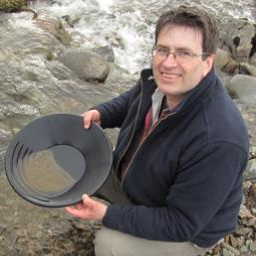Middle Jurassic Dinosaurs in Context
A special issue of Geosciences (ISSN 2076-3263).
Deadline for manuscript submissions: closed (31 January 2017)
Special Issue Editor
Interests: vertebrate palaeoichnology; Middle Jurassic dinosaurs, crocodiles, ichthyosaurs and insects; imaging techniques in palaeontology (MRI, CT, CSLM, UV, IR, microCT, drone imaging); geodiversity and geoconservation; stratigraphy; amber; Carboniferous crustacea
Special Issue Information
Dear Colleagues,
Middle Jurassic dinosaurs are crucial to our understanding of the early evolution of many of the better known Cretaceous forms. Dinosaurs such as the sauropods diversified greatly at this time and the earliest coelurosaurians first appeared. Recently found material may help to pin down the origination date of some of the major theropod lineages that gave rise to tyrannosaurs, dromaeosaurs and birds. This Special Issue of Geosciences examines the development of these important dinosaur lineages and places them within their contemporaneous environments in order to help contextualise the diversification and evolution of dinosaurs at this time. The aim is to include papers (original research articles, review articles, commentary, and case studies) looking at the evidence from both osteological, ichnological and other remains of the dinosaurs and their associated fauna and flora to build a more holistic picture of the Middle Jurassic interconnectedness.
For this Special Issue, we invite contributions broadly exploring Middle Jurassic environments and their dinosaurs, the spatial distribution of dinosaur groups and their evolution. Potential topics include changes in climate, palaeogeography, ecology, evolution, dinosaur locomotion, and diet. Papers may focus on the taxonomic description of individual specimens, the broader evolution of major groups, environmental and ecological contexts of dinosaurs in the Middle Jurassic, changes in associated fauna and flora, and the distribution of the different dinosaur groups although other relevant topics will be considered.
It is recommended that authors approach the Guest Editors at an early stage about possible submissions in order to verify the appropriateness of their potential contributions. If appropriate, an abstract will be requested, and the corresponding author required to submit the full manuscript online by the deadline.
Dr. Neil Donald Lewis Clark
Guest Editor
Manuscript Submission Information
Manuscripts should be submitted online at www.mdpi.com by registering and logging in to this website. Once you are registered, click here to go to the submission form. Manuscripts can be submitted until the deadline. All submissions that pass pre-check are peer-reviewed. Accepted papers will be published continuously in the journal (as soon as accepted) and will be listed together on the special issue website. Research articles, review articles as well as short communications are invited. For planned papers, a title and short abstract (about 100 words) can be sent to the Editorial Office for announcement on this website.
Submitted manuscripts should not have been published previously, nor be under consideration for publication elsewhere (except conference proceedings papers). All manuscripts are thoroughly refereed through a single-blind peer-review process. A guide for authors and other relevant information for submission of manuscripts is available on the Instructions for Authors page. Geosciences is an international peer-reviewed open access monthly journal published by MDPI.
Please visit the Instructions for Authors page before submitting a manuscript. The Article Processing Charge (APC) for publication in this open access journal is 1800 CHF (Swiss Francs). Submitted papers should be well formatted and use good English. Authors may use MDPI's English editing service prior to publication or during author revisions.
Keywords
- Middle Jurassic
- Dinosaurs
- Environment change
- Evolution
- Ichnology
- Osteology
- Taxonomy
- Palaeogeography





